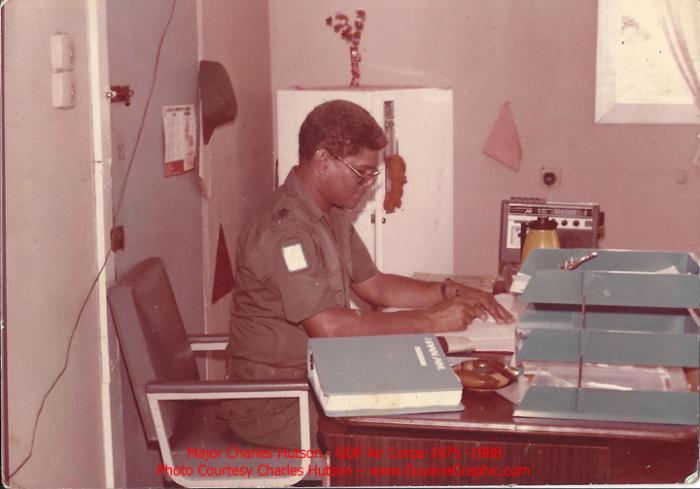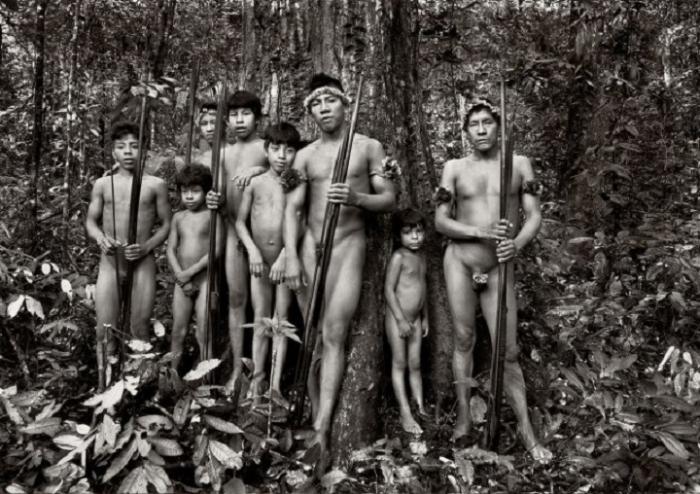
The unanticipated death of Denis Williams after a short bout with cancer deprived Guyana of a remarkably versatile native son.
His early promise as a painter won him a two-year British Council scholarship to the Camberwell School of Art in London in 1946. He remained in London during the following decade, during which he taught fine art and held several one-man shows of his work.
From 1957-1967, he taught art and art history at the School of Fine Art, Khartoum, Sudan; the University of Ife, Nigeria; Makerere University, Uganda; and the University of Lagos, Nigeria. He also published numerous articles on the history and iconography of West African classical art expressed especially in brass, bronze, and iron, and a book, Icon, and Image: A Study of Sacred and Secular Forms of African Classical Art (1974, New York University Press).
He had been exposed to archaeology in Sudan and renewed his interest in 1968 when he finally returned to Guyana and established a homestead in the Mazaruni District. In his first letter to the Smithsonian Institution in 1973, he said “my interest in these antiquities is that they may explain something about the who and how, as well as the when of the arts of the Guyana Indians.”
His appointment in 1974 as director of the newly-created Walter Roth Museum of Archaeology and Art History in Georgetown provided the opportunity to pursue this quest. Initially, he concentrated his attention on petroglyphs, not only recording the designs, but excavating to recover the tools used and observing the environmental contexts. His Master’s thesis, “The Aishalton Petroglyph Complex in the Prehistory of the Rupununi Savannas,” submitted to the University of Guyana in 1979, presented ideas elaborated in a 1985 article published in Advances in World Archeology in 1985 (pp. 335-387).
In 1980, he began intensive archaeological and paleoclimatic investigations of the shell middens on the northwest coast of Guyana. From the beginning, he was aware of potential disturbance of stratigraphy, errors in radiocarbon dates, and other pitfalls, and some of his efforts to detect them were detailed in “Early Pottery on the Amazon: A Correction” (1997, American Antiquity 62: 342).
Evidence for a correlation between the declining productivity of mangrove resources and changes in artifacts and settlement behavior was summarized in “Some Subsistence Implications of Holocene Climatic Change in Northwestern Guyana” (1982, Archaeology and Anthropology). His observation that the methods employed by the Warao for processing palm starch are preadapted for eliminating the poison from bitter manioc offers a reasonable explanation for the origin of this remarkable technology (1992, El Arcaico en el Noroeste de Guyana y los Comienzos de la Horticultura. In Prehistoria Sudamericana, edited by B. J. Meggers, pp. 233-251).
A monograph detailing his evidence and interpretations of the interaction between environmental change and Guyana’s prehistory was in the press at the time of his death.
Denis Williams combined the insights of an artist with the inquiring mind of a scientist. He read voraciously and critically in both Spanish and English, looking for techniques, information, and ideas he could apply to the collection, description, analysis, and interpretation of archaeological and environmental evidence. Amassing data was not the end, but a prerequisite to identifying the “who” and the “how.” Drawing on his own artistic insights and his experience with indigenous African artists, he sought ideological and behavioral significance for the symbols in rock art and suggested activities leading to the adoption of pottery.
He recognized the importance of publication and founded Archaeology and Anthropology, the journal of the Walter Roth Museum, for this purpose in 1978. His own skill as a writer is documented not only in his scientific papers but in numerous works of fiction.
His accomplishments were recognized in several national awards and an honorary doctorate from the University of the West Indies in 1989. It never occurred to Denis that the prehistory of Guyana was not part of his racial or ethnic heritage; it was part of the heritage of his country, of his continent, and of humanity.
He worried about the lack of interest among young people and in 1986 he and his assistant, Jennifer Wishart, initiated a program of junior archaeologists in secondary schools. After a slow start, it seems to be gaining popularity. Hopefully, one of the students will feel the excitement and challenge that motivated Denis Williams and be inspired to continue his work. Betty Meggers is a research associate at the Smithsonian Institution in Washington, D.C.






